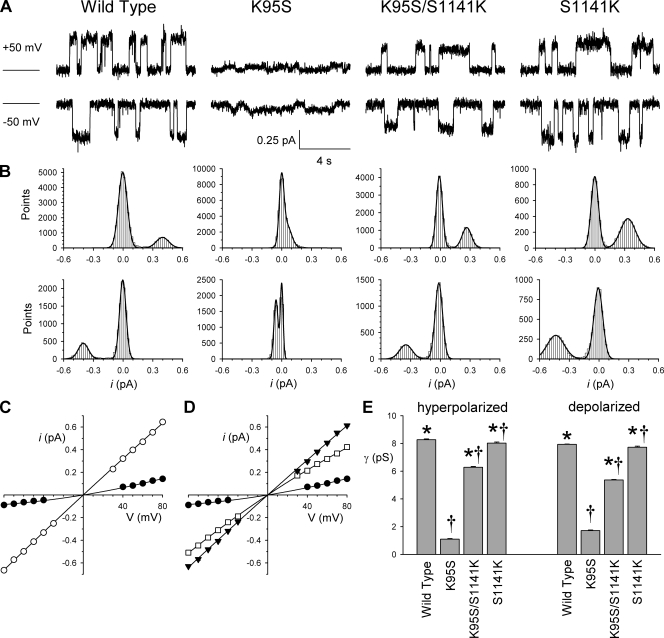Figure 2.
Single-channel conductance is restored by moving a positive charge from TM1 to TM12. (A) Example single-channel currents carried by the different CFTR variants named, using symmetrical high (154-mM) Cl− concentrations, at membrane potentials of +50 mV (top) and −50 mV (bottom). Channel activity was maintained by the addition of 15–30 nM PKA and 1 mM ATP to the bath. The line to the left represents the closed-channel current level. (B) All-points amplitude histograms prepared from extended periods of the recordings shown in A. Each has been fitted by the sum of two Gaussian functions with mean amplitudes of 0 pA and at +50 mV: 0.397 pA (wild type), 0.046 pA (K95S), 0.266 pA (K95S/S1141K), and 0.331 pA (S1141K); at −50 mV: −0.401 pA (wild type), −0.058 pA (K95S), −0.349 pA (K95S/S1141K), and −0.437 pA (S1141K). After fitting, the width of the bins has been increased from 0.005–0.01 to 0.02 pA for display purposes. (C and D) Mean single-channel I-V relationships for wild-type (C, ○), K95S (C and D, •), K95S/S1141K (D, □), and S1141K (D, ▾). (E) Mean unitary slope conductance measured from individual patches for inward currents (hyperpolarized voltages) and outward currents (depolarized voltages). Asterisks indicate a significant difference from K95S (P < 10−10). Daggers indicate a significant difference from wild type (P < 10−10 for both K95S and K95S/S1141K; P < 0.05 for S1141K). Mean of data from 4–10 patches in C–E.

